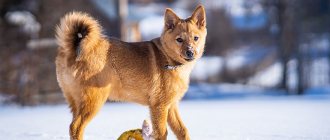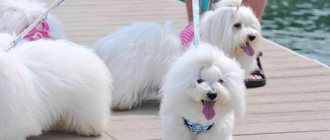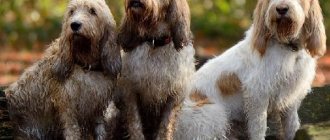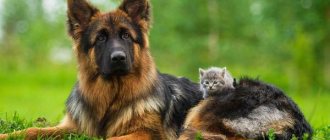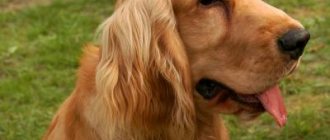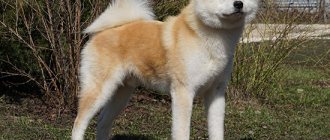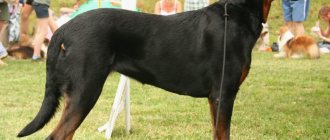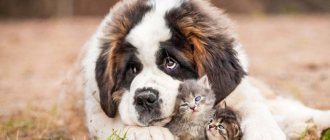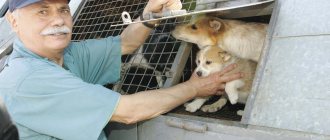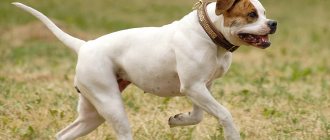In Russia, as well as a number of other countries, there is an increase in the demand for dogs of northern breeds. They tolerate harsh climates more easily and adapt to the new regime faster than others. One of these breeds that is in good demand today is the Yakut Laika. The homeland of these dogs is Yakutia. Animals of this breed have thick, dense hair, which allows them to sleep right in the snow. Thanks to their flexible nature, huskies easily find a common language with people. They are perfect for both hunters and ordinary people. After all, dogs have excellent working qualities in their blood, because of which the pet will become the best assistant for its owner both on the hunt and in everyday life.
Origin story
The Yakut Laika is an ancient breed, which was bred by the aborigines - the indigenous inhabitants of the Far North. It is believed that the ancestors of today's representatives of the breed settled in the village of Nizhnekolymsky Ulus, since it is in this area that puppies with blue eyes have been born for a long time.
According to archaeologists, sledges and skeletons of dogs (presumably huskies) were found during the excavations. The discovered remains were about 7-8 thousand years old.
Northern peoples used dogs for various purposes:
- for traveling on a sleigh in snowy areas. Animal teams were needed to deliver mail and transport scientific expeditions;
- for deer hunting;
- as border guards.
By the middle of the 20th century, there were more than 30,000 individuals of hunting huskies throughout Yakutia. However, closer to the beginning of the 21st century (with the advent of technology), the need for dog sleds gradually began to fade away, and the number of animals began to decline sharply.
Probably, the breed could have disappeared completely if the breeder-enthusiast Dyachkov had not taken up the matter. It took him about 10 years to recover. Thanks to him, today the Yakut Laika is not an endangered species, but a completely competitive representative of the canine world. It is generally accepted that the individual presented to the world is a cross between a reindeer husky and a husky, which was once brought to Yakutsk. True, the Yakut Laika is not yet recognized by the international FMI club. But still there is progress - the breed standard is officially recorded in the kennel club of the Russian Federation.
Historical reference
The Yakut hunting Laika is one of the aboriginal lines of northern hunting dogs . Varieties were bred geographically, in accordance with the living conditions and needs of people living in the region. For centuries, northern quadrupeds lived in harsh conditions, helping their owners hunt very dangerous game.
In the early 90s of the 20th century, not far from the New Siberian Islands, archaeologists discovered a hunting camp, which (apparently) was thoroughly equipped. In addition to dwellings, sledges, dishes and other utensils, scientists found the remains of huskies; at least the shape of the skull and the dimensions of the dogs’ bones are very similar. Archaeologists estimated the find to be 8 thousand years old, so we can only guess when exactly the history of the Yakut Laika breed began.
There is no doubt that dogs were an integral part of the inhabitants of the north; there are hundreds of documented evidence of this. Regardless of the differences, huskies were described as dogs with very thick fur, a keen sense of smell, intuitive thinking and well-developed navigation skills. Northern dogs were not afraid of blizzards, because their noses sensed the house, and their strong paws always carried them to the goal. Honed survival skills have saved hundreds of human lives, as Yakut Laikas are distinguished not only by their endurance, but also by their loyalty.
This is interesting! Yakut Laikas were briefly used as sled dogs for transporting small loads and mail.
There is evidence that before the Yakut Laika was included in the register of working dogs, they were already used to protect borders and territories. There was also a hypothesis that the four-legged animals were bred...for meat and for making fur coats. Be that as it may, the breed in its “pure form” was remembered after the discovery of the remains of the aboriginal Yakut Laikas. By that time there was no one to breed, and livestock specialists set about restoring the breed. By the way, in those years, the breed was called the Kolyma Laika.
Aboriginal dogs from the territories inhabited by Yakut Laikas were used in breeding work. There were also well-established breed lines, which were used to fix color and exterior. The work went quite quickly, a lot of resources and effort were invested in it. The efforts were rewarded with the recognition of the Yakut Laika as a separate breed (2005) . As soon as the RKF (Russian Kynological Federation) gave the breed the green light, Yakut Laikas began to appear at major exhibitions and win ever larger circles of fans.
Note! The official description of the breed was published in 2013 and has not yet been corrected.
Description of the breed
An adult Yakut Laika has compact dimensions: not too tall, strong bones and a muscular body. Males grow up to 58 cm, the maximum height of females is 55 cm. The weight of an adult dog varies between 20-23 kg.
The remaining characteristics have the following features:
- The head is proportional to the body. The high-set triangular ears stand upright; they are allowed to droop - but only halfway. The forehead is wide, the muzzle is elongated. The transition from the top of the skull to the muzzle is noticeably pronounced. At the tip there is a fleshy black nose. The jaw is well developed, dry black lips fit tightly.
- The eyes are located on the midline. Widely spaced. Their shape is almond-shaped. The size of the eyes seems small compared to the large head. The color of the iris is blue or brown. Eye rims are black.
- Limbs are powerful and straight. Located parallel to each other. The fluffy tail is set low, its main position is curled upward, lying close to the hip or back. Moreover, there can be several options for a curled tail - full, tight, double ring. In a calm state, the tail can simply lie or hang.
Some people may confuse the Yakut Laika with the similar-looking but unrelated breeds – Husky and Malamute. However, there are significant differences in the characteristics of the husky: a slightly different appearance, a different eye shape, a different tail, and others.
Usually dogs are given names that characterize their good sides. Yakut Laikas are mostly called in Yakut. For example, the following nicknames are known for this type of breed: Erhan (translated from Yakut - fearless), Syndys - lightning-fast, Dyulus - purposeful, Yakut. But modern dog names like: Jersey, Vesta, Heidi, Nancy, Borey, Gris, Storm and others may also be suitable.
Colors and coat
Due to the specifics of their habitat, Yakut huskies have dense long hair, as well as a very thick undercoat. The spine of the hair is straight, shiny, but rough. On the limbs the hair length is short, the tail is fluffy, and on the nape and collar the hair is very long. The following defects are considered: waviness of the pile and its excessive softness. The disadvantage of the breed is that the undercoat is not very thick and has little fluffiness.
According to the breed standard, Yakuts must have a spotted color:
- black and white or vice versa;
- combination of white and light gray;
- tricolor - black and white with the addition of red markings;
- black with brown;
- white and red and vice versa.
Solid color is not acceptable. The exception is white color.
Appearance
The Yakut Laika dog breed is a strong, muscular, well-built and at the same time compact, high-legged four-legged dog . Visually, the dog looks very massive, without any hint of a “damp” build. The rather harsh appearance is emphasized by thick, coarse fur, which allows the husky to work tirelessly in harsh conditions. When in an unfamiliar environment, the dog behaves with restraint, more friendly than wary. The characteristics of the breed describe it as a working and very faithful dog with a keenly developed sense of guardianship over the pack (family). If necessary, the Yakut Laika fiercely guards the owner and his property.
Males and females differ visually; they are stronger, wider and more restive. The female has a softer expression on her face, but her character is in no way inferior to that of the male. The breed standard provides a clear framework within which growth varies:
- Males : optimal height 56 cm; permissible height 55–59 cm.
- Females : optimal height 55 cm; permissible height 53–57 cm.
The weight of an adult dog is from 20 to 23 kg. You need to understand that dimensions are not the main point of the exterior; proportions are much more important:
- The length of the body is 10–15% greater than the height at the withers.
- The length of the skull from the occipital protuberance to the nose is 40% (or slightly less) of the height.
- The length of the facial part is approximately equal to 38–40% of the length of the skull from the back of the head.
- The height of the front paws is 52–54% of the height.
Inexperienced dog lovers can rarely identify dogs from the Laika breed line without making mistakes. The four-legged dogs are often confused with Malamutes or Siberian Huskies. The main differences between the Yakut Laika and Husky in exterior are physical strength, tail set, head size, color and shape of the eyes. Siberian Huskies are sled dogs capable of carrying small loads over a short distance, but as quickly as possible. The Yakut Laika is a hunting dog and despite being distantly related to the sledding breed lines, they are much inferior to the Husky in sledding.
Character
Laikas are distinguished by their patient, hardy and caring character. They treat their family well, including small children. They are infinitely loyal and devoted to one owner. If you go for a walk with a pet of this breed, you don’t have to worry about your safety. The pet will not show aggression towards others, but will show its teeth in case of a real threat. Laikas treat strangers with caution. Sometimes it may seem that the dog is completely indifferent to the stranger, but this is only a superficial impression. In fact, the dog closely monitors every action of the new person, and in case of danger it is ready to protect its loved ones.
Yakut Laikas are very active and sociable. They simply need constant movement, which is why it is so important to load the animal with physical training. A representative of this breed has a hunting instinct, so he will be able to accompany the hunter, even help him. It is also worth noting that Yakut huskies are self-sufficient animals. They will never impose their company on the owner if he is busy, become baselessly offended or behave arrogantly. But dogs are very proud and are acutely aware of obvious injustice.
You can get a Laika in a house where there are already other animals, including dogs. The breed will try to dominate. But provided that the other dog shows the best leadership qualities, the husky will readily accept him as a leader and will treat him with respect.
Hunting
Yakut Laikas have been bred for a long time in regions with a mild climate, which has had a detrimental effect on the working skills of the breed. Aboriginal dogs are still used to this day to hunt large game in Yakutia. You need to understand that a puppy from working parents will do its job better than a puppy from a show-class nursery.
For hunting, heredity and proper raising of the dog are extremely important - adequate feeding, space, long, free walks and training from early childhood. Working dog puppies go out into the fields when they can't work, but they watch their parents, practice tricks on their siblings, and this experience is priceless.
Yakut Laikas are actively used for autumn hunting. The fishery focuses on bears and adult moose. In some areas, young dogs are actively trained to search for elk. A trained dog will not only work, but also search for the animal, which significantly saves hunters’ time.
Laikas work in packs (4-6 or 6-8 dogs), at the beginning the dogs disperse and walk approximately in a line; when they smell the animal, they begin to run and close together. During the chase, the four-legged animals run through the bushes, often stepping on sharp branches or hitting rocks. Endurance, passion and strong paws Yakut Laikas are designed to overcome just such obstacles.
Note! Purebred Yakut huskies look high-legged, which is due to the need to run through the bushes. Short dogs get stuck in bushes or get wounded on their faces, which takes them out of the work process.
Care and maintenance
Representatives of the breed tolerate low temperatures well, but heat is a challenge for them. Despite the fact that the husky does not have a specific dog smell, it is quite problematic to keep it in an apartment. It is much easier for a dog to survive winter in an enclosure on the territory of a private house than in a heated residential building (in a cramped city apartment). The dog's thick coat requires periodic brushing. You only need to wash your husky if it is heavily soiled (for example, after a walk in the slushy season).
The remaining procedures are the same as for other breeds:
- cleaning the ears - with moistened cotton swabs as the shells become dirty;
- eye treatment - you need to wipe it 1-2 times a week with cotton pads soaked in boiled water;
- dental care – it’s worth purchasing special bones;
- water procedures. The standard is 2-3 times a year.
The husky molts no more than 2 times a year. At this time, it is advisable to take more care of your pet’s fur, combing out dead hairs. In this way, you can avoid hair matting and tangles. The dog needs to constantly devote time, because it will feel unfulfilled in the absence of physical activity. If the owner and family members have no time to care for the husky, it will become too restless.
Feeding
If the dog’s place of residence has a harsh climate, then the pet’s diet must contain a large amount of fat. The animal's menu should include the following dishes:
- meat;
- rich broths;
- cereals
If the husky lives in warmer latitudes, then the amount of fat in its diet can be reduced. But in any case, the dog should receive meat, offal, sea and river fish. All of the listed products should be given to the dog boiled and fresh. To diversify your pet’s menu, you should add fermented milk products, raw eggs, vegetables, fruits and herbs to the list of dishes. You should not feed your animal canned food, sweets or smoked foods. Alternatively, you can replace natural products with dry mixtures. However, this type of food (prepared food) should not be the only one. It is necessary to periodically give your pet various vitamins and minerals in the form of additional supplements.
Some owners sterilize their pets - that is their choice. So, if a dog undergoes endoscopic sterilization, you should carefully monitor its further diet and the amount of food eaten. After all, after this operation, huskies often have a tendency to become overweight.
Content Features
The Chukotka sled dog is ideally suited for life in the Arctic. Keeping such a dog in a city, and even in a warm climate, is extremely undesirable. This is an exclusively working breed, it needs appropriate living conditions and physical activity.
Like other sled dogs, Chukchi dogs must run, otherwise they will go crazy from boredom. They can take out a nervous breakdown on objects or the body, for example, they will gnaw a paw to the bone, this has happened.
Owners who tried to keep Chukchi sled dogs in the city complained about their excessive mobility and independence. When walking, they should not be let off the leash, otherwise they will run off into the distance with their tails in the air. They take root well in private homes in the northern regions.
The record for speed and endurance belongs to Chukotka riders. A team can travel from 100 to 200 km per day at an average speed of 20 km/h.
Nutrition
The digestive system is adapted to the traditional food of northern dogs: frozen fish, meat, fat, offal. They are indiscriminate and undemanding when it comes to food.
There is an opinion that if the owner has nothing to feed the sled, she will go off to get food herself. But it is worth noting that most modern Chukchi dogs do not have the appropriate hunting instinct and are worse adapted for independent survival than their ancestors. What they have retained is the energetically beneficial protein-fat type of metabolism, which allows them to easily endure several days without food and spend energy sparingly.
Training and education
Yakut Laikas have an innate sense of responsibility. They can easily become offended or ashamed of something. This factor can be used for training, but there is no need to push. The dog must be raised in a friendly environment, preferably in a playful way. If there are children in the house, you can entrust them with a part of raising the pet during the game. The animal learns basic communication habits from its mother. And only after getting into a new family does the husky learn the basics of diplomacy from the new owner.
The main goals are to teach the dog self-control and achieve obedience to the owner. The Yakut Laika understands humans very well, and therefore lends itself well to training.
Yakuts settle into a new family quite quickly. Therefore, the owner should not be shy and hesitate in establishing positions.
Character and features of training the Yakut hunting husky
Like all northern dog breeds, huskies are very capricious and freedom-loving. But at the same time, they are loyal to their owner, love communication, and quickly find contact with people. For families with children, the Yakut Laika will be the optimal purchase. They are patient and friendly, caring and persistent. They show strength only when there is probable danger. If someone cries, the pet will be the first to rush to the rescue and will not leave until the situation returns to normal.
You can leave the house under the protection of huskies and walk with them on the street without fear, but do not rush to let the animal off the leash. Because of its curiosity, your pet can run away a considerable distance and it will not be easy to find it. This is especially true for puppies, whose playfulness sometimes goes beyond what is permitted.
“Yakut” will give all its love to one owner, but in return it will demand the same if you are not busy. Patience is another positive quality, thanks to which your pet will calmly wait until someone pays attention to it. The dog will treat other family members as one of his pack. You can count on protection from them, but you cannot count on unquestioning execution of commands.
Laikas are not interested in strangers, but this is only at first glance. The dog is always on guard and can react to the situation at any moment. The breed is intended for hunting and in this area its qualities are best revealed. If you are a homebody, then the Yakut Laika is not for you. By nature, these are active individuals and will not be able to sit in one place for a long time. The dog will keep you company during training, on a morning jog (not in the heat), and will be able to walk for several hours. Laikas, due to their agreeableness, get along well with other animals in the house.
It is easy to train a Yakut. This is one of those breeds that understands a person at a glance and picks up intonation. The main thing is that the entire learning process is carried out in a playful way, without pressure. If you are not experienced in this matter, it is better to leave training to professionals. As an alternative, you can attend special courses and, after training, raise your pet yourself.
Yakut Laika puppies
Little puppies learn basic communication commands from their mother, so before purchasing a baby from a breeder, make sure that he was kept in decent conditions. Use in training the innate feelings of shame that are inherent in the Yakut Laika. It will be a good help during training, but only if you know when to stop.
Decide for what purpose you are purchasing the Yakut. If just as a pet, then a puppy from the “elite” is just what you need. However, if you are counting on hunting with your dog, then it is better to look for an option with a working pedigree.
Diseases and life expectancy
Like all Siberians, Yakut Laikas have excellent health. They can easily tolerate cold weather, but have a hard time during the hot season. True, no living creature is immune from disease, so individuals of this breed can still be subject to serious pathologies that do not depend on climatic conditions:
- different types of oncology;
- skin problems;
- diseases of the musculoskeletal system;
- eye diseases.
Changes in the pigmentation of the nose cannot be called a pathology. In fact, highlighting only affects the Yakut's exhibition career. This feature does not affect the quality and life expectancy of the animal. On average, Yakut huskies live about 15 years, and long-livers are also common.
Comparison of breeds
As already mentioned, the Yakut Laika has external similarities with some other breeds:
- The Wolfspitz is a bit similar to the Yakut Laika and has similar dimensions and weight. True, the breeds differ in color. In the former, a black-fawn coat color predominates, the undercoat is light, even silver. The large representative of the Spitz family is sometimes confused with a wolf. The breeds are similar in character. It can also be noted that the Volspitz, thanks to its luxurious coat, easily tolerates frost. This factor also creates a similarity with the Yakut.
- Yakut Laika or Husky. Yakuts have longer hair, they bark more often and louder in case of danger or when chasing prey (huskies howl more than bark). A husky must have blue or light brown eyes, but a husky can have any shade of iris.
- Yakut Laika or Samoyed. The Snow White (Samoyed) Laika is very kind and friendly to people. The coat color is always monochromatic: pure white, cream, flesh-colored. Eyes – dark brown.
It turns out that the Yakut Laika is the best hunting and sled dog. Huskies catch prey mainly for their own satisfaction. Yakut wants to please, first of all, his owner with the trophy. The Wolfspitz is similar in character and appearance (with the exception of coat color), but is not used by people for harnessing.
Character and behavior
The Chukotka sled dog is a hardy, strong, patient and obedient dog, a bright representative of ancient primitive breeds. Combines many talents. It can be a sled dog, a hunting dog, a faithful companion and protector of the owner. The attitude towards strangers is friendly or passive-defensive. Chukotka sled dogs perform a good guard function; many are able to protect their owner from predators.
The Chukotka sled dog is not popular among city residents. In terms of appearance and beauty, it is inferior to huskies or other huskies. In addition, this is an aboriginal dog, a pack dog, while huskies and huskies are individualists.
Chukchi sled dogs have a highly developed pack instinct. A strict hierarchy reigns in their “family” and only the sensitive leadership of the leader allows them to avoid minor brawls. This role can be performed by either a male or a female. Sled dogs are very kind and trusting. They sometimes bark at strangers, but more often they greet by wagging their tail and howling. Do not apply to dogs of the same owner. With sled dogs, the owner is the one who feeds. Therefore, animals are often rented out.
The leader for the team is chosen in early childhood. Puppies are placed in a basin on a skin, they get out, but are not held on the edge and fall down. The one who can hold on and walk along the edge becomes the leader. According to experts, such a dog will be able to lead a sled in any weather, at any time of day, on any terrain. Or they simply choose the strongest and, in the person’s opinion, the smartest. Leader training begins at six months of age and continues for 2 years. No “voice” or “give me your paw.” There are only four commands: “Forward!” (“Hike!”), “Stop!” (“Hoa!”), “Right!” (“Gee!”) and “Left!” ("Ha!"). The musher commands only the leader, this is enough for the entire team to obey.
It was the Chukchi huskies that were chosen for the most difficult joint expedition of Fyodor Konyukhov and Viktor Simonov. They had to go from Karelia to southern Greenland via the North Pole. Travelers with dogs started in Petrozavodsk on April 3, 2013. Due to early warming and the movement of polar ice, the route was interrupted and the expedition was postponed. Subsequently, it never took place.
Pros and cons of the breed
Each dog breed has its own special qualities. For the Yakut Laika they are as follows:
| Characteristics | pros | Minuses |
| Shedding | Sheds 1-2 times a year | |
| Care | Thick fur should be brushed periodically and tangles removed. | |
| Contents in the apartment | Doesn't fit | |
| Get along with children | Get along well | |
| Living with other animals | They get along, but the husky can claim leadership | |
| Training | Even children can be trusted – in a playful way | |
| Guard qualities | Fits | |
| Physical exercise | Constantly required | |
| Agility | Copes well, as it has long been used as a sled dog in Yakutia |
In general, a northern breed pet is perfect for living on a property near a private house - as a watchdog. You won’t need to worry about your pet’s health – after all, he doesn’t mind any frost. However, in the summer, the dog will need to be hidden from the sun, because it is very difficult to tolerate the heat.
Yakut Laika training
It is recommended that Yakut Laika training be done by an experienced trainer, since these dogs have a rather stubborn character.
In the process of training, direct contact between a person and a dog is established and the leadership qualities of the owner are built.
You need to carefully monitor the quality of your husky’s commands, because due to her freedom, she will try to deceive you by making an indulgence for herself, thereby testing your strength and rigor.
You should not be rude or physically punish your husky, as it may simply take offense at you and begin to ignore all your further attempts at education and training.
Use treats and affection during the training process.
Where to buy and price
It is advisable to choose a Yakut Laika puppy from the offers of well-known nurseries. For example, you can visit the following clubs:
- Agronaut in Moscow;
- Free flock in Moscow;
- Diamonds Anabar in Sochi;
- Biryusinka in Nizhny Novgorod.
Only if you purchase a Yakut Laika from them can you be sure of the purebred animal. In addition, the clubs' specialists will provide the new owner with all the necessary documents and give advice and recommendations on how to properly care for the pet.
The price for a Yakut Laika from a nursery ranges from 15,000 to 45,000 rubles. for a puppy. The final cost will be based on indicators of the animal’s character, coat color, and pedigree. It is in the nursery that the future owner has the opportunity to see the puppy’s parents, as well as learn their history.
